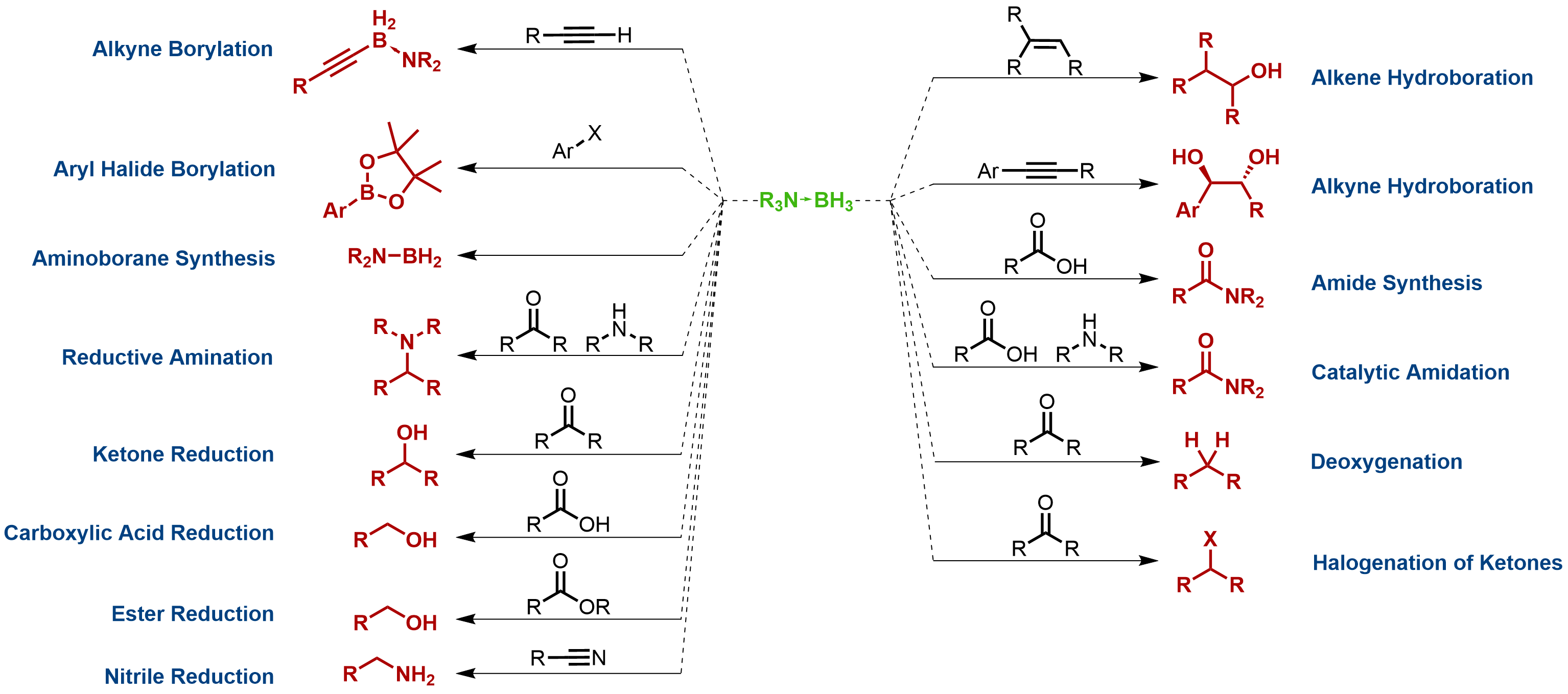Research Overview
Most of our research projects involve organoborane chemistry. We continue our tradition of reagent and methodology development.
Our research projects can be divided into 4 categories: boron chemistry, fluoroorganic chemistry, materials chemistry, and medicinal chemistry. These projects often build on our previous work, and incorporate reagents and methodologies we have previously developed.
Boron Chemistry
Many of our current projects in the area of boron chemistry are centered around the synthesis and application of ammonia- and amine-boranes.
We have used ammonia- and amine-boranes for applications typical or borane reagents, such as hydroboration, reduction, and reductive amination, in addition to catalytic and stoichiometric amidation protocols, conversion to aminoboranes, as well as the borylation of terminal alkynes and haloarenes.

Fluoroorganic Chemistry
Fluoroorganic molecules are valued intermediates and targets in drug design owing to their unique biological properties. We are developing novel methods for the preparation of fluorosynthons that can be utilized by synthetic chemists for the preparation of complex natural and unnatural molecules.
Our current work in this area is in the use of fluorine to modulate the reactivity of reducing agents. Our past fluorine projects include: fluoroallylboration, fluorinated ester aldol chemistry, trifluorovinylation, and trifluoromethylolefin synthesis.
Materials Chemistry
Amine-boranes can be used themselves as materials, or as precursors and reagents in the production of other materials of interest.
The amine-boranes produced by our methodologies are utilized for a range of materials chemistry applications, including: hypergolic propellants, hydrogen storage materials, formation of metal nanoparticles, and the production of boron-nitrogen polymers.

Medicinal Chemistry
Our medicinal chemistry work uses methodologies and reagents that we have developed to produce bioactive molecules.
Much of our current work in the area of medicinal chemistry in the search for new anti-bacterial agents, where we have identifies compounds with activity against Clostridioides difficile (C. diff), methicillin-resistant Staphylococcus aureus (MRSA), and Neisseria gonorrhoeae.
In the past we have worked to develop small molecule anti-cancer drugs, NFkB-Inhibitors, and neurochemicals via aryl-boronic acid mediated catalytic GABA synthesis.